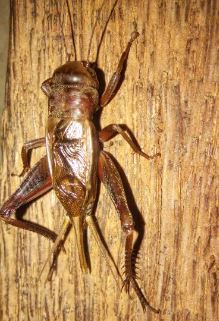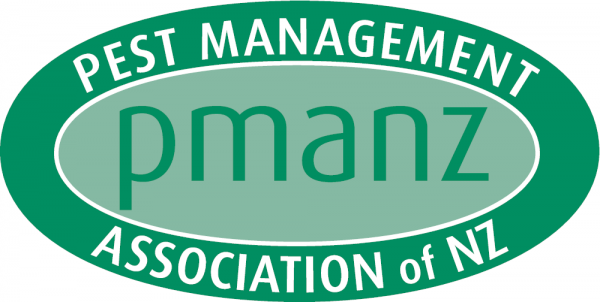Pest Information » Tropical House Cricket
 Tropical House Cricket (Gryllodes sigillatus)
Tropical House Cricket (Gryllodes sigillatus)
PMANZ have been asked to convey this message to all our members, suppliers and friends of the association who in turn may want to alert their own customers and others in the industry.
The MESSAGE is as follows:
Over the past year, an introduced cricket species, the tropical house cricket (Gryllodes sigillatus) has been found in eight different locations in the Tauranga airport area. Biosecurity New Zealand (the biosecurity division of MPI) has investigated each find and eliminated the cricket populations as they were found.
It is suspected more finds will be made as Biosecurity New Zealand believes the cricket is now established in the local area and it is no longer feasible to try to eliminate it. Workers at one detection site report the crickets have been present for at least 18 months and entomologists estimate that there have been at least four generations of crickets in this area.
The tropical house cricket is native to Asia and has spread throughout tropical regions worldwide. While it is classed as an unwanted organism in New Zealand, the tropical house cricket is assessed as a low risk and unlikely to do harm here. It is not considered an economic or environmental pest in its native or introduced range. It is known to cause very little or no damage to plants. It can, however, become a "nuisance pest" when it enters houses.
Our advice to pest controllers who find this species is to treat it as you would other insect pests such as cockroaches.
It is not necessary to report findings of the tropical house cricket to MPI as the investigation has finished.
These photos (to be supplied) will help with identification. The tropical house cricket is 12 – 22 mm long and light yellowish-brown coloured. The sexes are easily distinguished as adults: all males have short wings used for acoustic signalling that cover half of the abdomen whereas females are wingless and have a functional ovipositor for laying eggs into the soil.
They take shelter in the crevices and cracks in and around buildings. However, both sexes leave these areas at night to forage and mate, and females oviposit in surrounding soil and leaf litter. This organism can hitchhike in containers, vessels, plant materials and other goods entering or moving around New Zealand.
Please continue to report detections of other insects that are new to you as you go about your work. The pests and diseases hotline for reporting is 0800 80 99 66.
If you have any queries, please contact MPI on the number provided.
The MESSAGE is as follows:
Over the past year, an introduced cricket species, the tropical house cricket (Gryllodes sigillatus) has been found in eight different locations in the Tauranga airport area. Biosecurity New Zealand (the biosecurity division of MPI) has investigated each find and eliminated the cricket populations as they were found.
It is suspected more finds will be made as Biosecurity New Zealand believes the cricket is now established in the local area and it is no longer feasible to try to eliminate it. Workers at one detection site report the crickets have been present for at least 18 months and entomologists estimate that there have been at least four generations of crickets in this area.
The tropical house cricket is native to Asia and has spread throughout tropical regions worldwide. While it is classed as an unwanted organism in New Zealand, the tropical house cricket is assessed as a low risk and unlikely to do harm here. It is not considered an economic or environmental pest in its native or introduced range. It is known to cause very little or no damage to plants. It can, however, become a "nuisance pest" when it enters houses.
Our advice to pest controllers who find this species is to treat it as you would other insect pests such as cockroaches.
It is not necessary to report findings of the tropical house cricket to MPI as the investigation has finished.
These photos (to be supplied) will help with identification. The tropical house cricket is 12 – 22 mm long and light yellowish-brown coloured. The sexes are easily distinguished as adults: all males have short wings used for acoustic signalling that cover half of the abdomen whereas females are wingless and have a functional ovipositor for laying eggs into the soil.
They take shelter in the crevices and cracks in and around buildings. However, both sexes leave these areas at night to forage and mate, and females oviposit in surrounding soil and leaf litter. This organism can hitchhike in containers, vessels, plant materials and other goods entering or moving around New Zealand.
Please continue to report detections of other insects that are new to you as you go about your work. The pests and diseases hotline for reporting is 0800 80 99 66.
If you have any queries, please contact MPI on the number provided.
Related Content
- Code of Practice for the Food Industry
- Using Pesticides Around the Home
- Stay safe when using Poisons around the home
- Advice for Vets about rodenticide poisoning
- Ants
- Bed Bugs
- Bees
- Black Beetle
- Black Field Cricket
- Brown Marmorated Stink Bug
- Click Beetle
- Cluster Flies
- Cockroaches
- Flies
- Mice
- Mosquitoes
- Rats
- Spiders
- Tropical House Cricket
- Wasps
